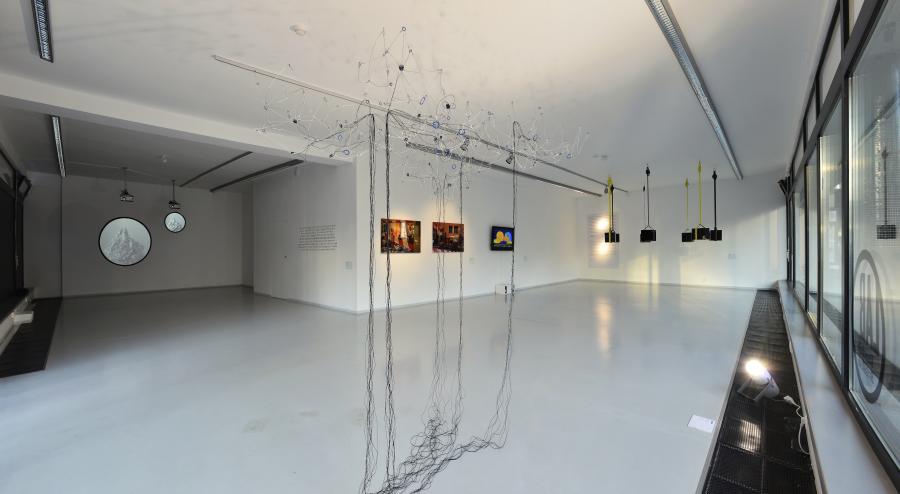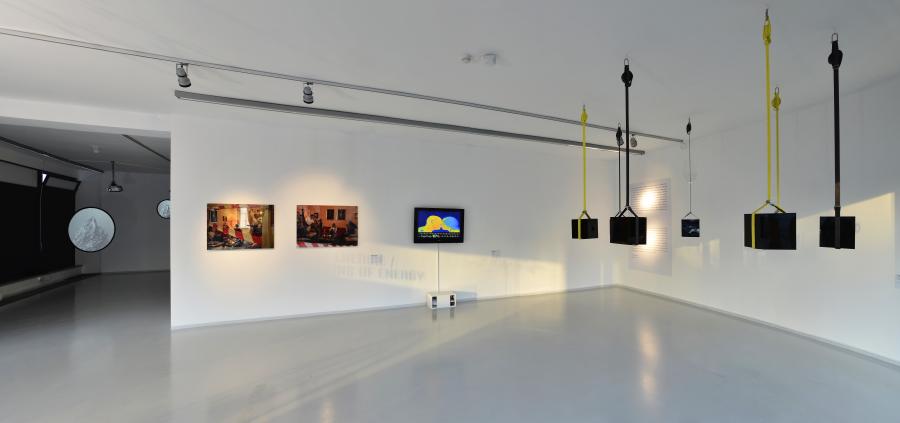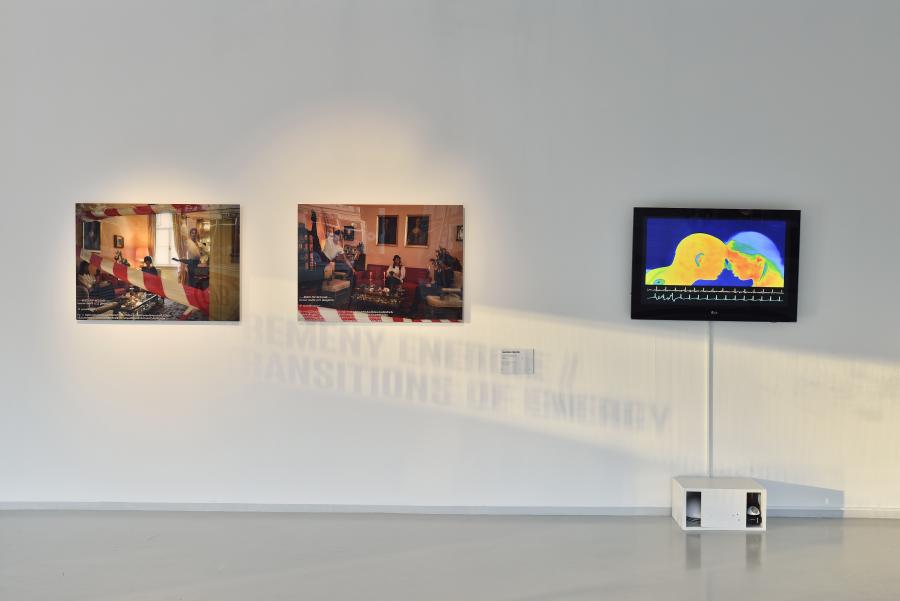Transitions of energy
“Energy” is a word of common usage. We use it and hear it often; however, few people can actually provide an exact definition. The term energy comes from the Greek word enérgeia, which means “active, working”; dictionaries and encyclopedias define it as the “the capacity of a body or system to do work”, focusing on what it does, rather than what it is. The Italian edition of Wikipedia reads: “Energy is a physical quantity that measures the capacity of a body or physical system to perform work, regardless of whether such work is or can actually be performed”. This definition is correct yet not fully explanatory, because energy is not a tangible material but, on the contrary, an abstract mathematical concept. Although there is no such substance as pure energy, modern society relies almost totally on energy: mechanic, electric, chemical, and thermal forms of energy are largely exploited in all industrial organizations and production processes. Still, there are other forms of energy that dictionaries and encyclopedias fail to mention: in fact, spiritual, passionate, and social energy have been the “driving forces” for mankind since time immemorial. The energy of passionate or personal desire, for example, can become an irresistible thrust pushing us to the edge of our limits. These forms of energy have inspired much art-making: the works of the five artists showcased in this exhibition, for instance, span different forms of energy, which engage in an interplay with the stream of life.
Flavia Bigi dedicates her artistic practice to inner spiritual energy. Her installation Pay Attention II (2015) is composed of seven cubic forms, each of them bearing the symbol of a religion. The artist’s choice of the closed shape of the cube is an allusion to the dogmatism of several religions, which end up being trapped in their pretension to unalterable perfection. The belts from which the plexi cubes hang also allude to the intellectual constraints and the limitation of knowledge that dogmatic beliefs cause to mankind. In the middle of the circular installation is the glass icon of a human face, where the artist etched the mathematical equation relating to energy: E = mc². In this way, the human being becomes a catalyst, a receptacle and a transformer of spiritual energy. The faithful may well identify with the symbol shown; however, inevitably, its effect on them will be filtered through their own sensitivity and culture. This generates a circular perception: while the relationship with the divine is codified through the written symbol, spirituality itself seems to stem from within individuals, as shown by the relief placed in the center of the installation. Physical phenomena like the absorption, the transmission, and the reflection of light inside the cubes help to deprive religious symbols of their intellectual supremacy, enabling a personal and tolerant spiritual experience. Bigi puts the individual in the center of the universe: an act reminiscent of the Renaissance, which betrays the artist’s Tuscan origins.
The study of human behavioral processes is a frequent feature of Bigi’s practice: in the video called The Chain (2013) and the photographic series Ada (2013) some children drag a long boat chain on a beach; they are not influenced by the meaning attached to this object as they are free from preconceptions. The quest for innate human nature, unburdened by social and cultural superstructures, is one of the artist’s recurring themes. Her analysis also pushes it into the realm of fairy tales, which aim at guiding children’s behavior. Flavia Bigi neutralizes their purpose by providing an alternative rendering, like in her video installation Intimate Relationship (2010-2013).
casaluce/geiger & synusi@cyborg investigates post-human territory and the cyborg stream of life hovering between the real and the virtual. Inspired by Pekka Himanen’s book The Hacker Ethic (2001), where hackers are no longer viewed as computer pirates but as people who love exchanging information to create free software, the artist has chosen to focus her practice on “knowledge sharing”. Through her virtual dimension, she highlights the values of exchange, decentralization, and open-mindedness, approaching the concept of free transition of energy. Starting from the use of chats and nicknames, which became increasingly popular during the 1990’s, casaluce/geiger & synusi@cyborg has been constantly changing her name as well as her own existence, adapting to new temporary identities. Her multifaceted personality interacts with other entities and pervades different Internet platforms under the guise of a virus, which takes the visual form of encryptions in her photographic artwork, like in Untitled-energia (2014). Encryptions stem from hacker ethic but they are also connected to the concept of privacy, which is being increasingly undermined by social networks like Facebook. Encryptions allow their producer to provide the receiver with a key to access the meaning of the text shown in the photograph, making it possible to choose whether, how and when to share an idea, a thought, a secret. Since her “act of hacking” at the 2003 Venice Biennale and on the web (in From the Pages of My Diary), her work has become a blend of writing, photography, video, cyberspace, and performance, shedding some new and interesting light on the latest developments in anthropology and the media.
Her photographs called REHAB (2012) show the “non-tale” of a limit situation oscillating between good health and illness, which causes us to slow our real as well as virtual everyday routine down a little. In this type of experience, the individual challenges a “limit/boundary”, a key-word where the energy of desire is confronted with the possible and the non-possible.
Juliana Herrero investigates the current boundaries between the public and the private sphere using found footage from social networks, which she reworks, questioning the current meaning of Truth. Her floating “soundscapes”, as in Milieu (2014), are made of steel cables and mini speakers. Milieu transmits audibly reworked intimate messages and news coming from the community. The texts are translated into machine voices through an open source software. Here, the sound collage of public and private information created by the artist highlights the contradiction of the latest social media platforms, which blur and dematerialize the boundaries between our inner and outer worlds. Herrero goes as far as wondering whether there are specific sounds for the public and private realm and whether these are still separate domains in our interconnected society. Plateaus (2015) offers another acoustic sound naming fictional cities taken from various Internet databases and translated into human voice. Here, the human voice contrasts with the artificial names. In both media installations, the shadow cast by the networks of cables on the walls or on the floor amplifies vision and highlights the notion of virtuality underpinning these works. These pieces are fragile, ephemeral, like he essence of clouds, to which they are likened owing to their visual form; they are both fictional and real, like virtual reality. The artist declares: “In my work I attempt to emotionally provoke the audience while leaving an “empty space” for the imagination.” This statement seems to do away with the criticism raised by sociologist Jean Baudrillard against virtual reality, which, he claimed, killed illusion.1 In her video installation Invisible Cities(2013), a reworked political map of Eastern Europe oscillates between reality and illusion thanks to the alternating sounds of heartbeat and snoring during sleep. A stream of human energy sparks life into geopolitics by focusing attention on the people inhabiting these territories.
Moving from Alexander Calder’s hanging mobiles, Herrero’s sculpture installations mark a new conceptual development; despite them being static, they release kinetic energy from within thanks to sound vibrations and constant dialogue between analog and digital technology.
Sissa Micheli’s video installation A Mountain Phenomenon focuses on energy variations of light. Pictures of some silvery mountains move across the space as they are projected on reflectors used in photography and filmmaking. As they turn, these mountains, made of the reflective aluminum foil used for rescue blankets, reflect and break light, enhancing its energetic potential. The artist herself explains how her work developed in the text accompanying her video installation. She states that she started filming the movement of light on the uneven surface of the mountains she built to focus on its subtle changes. This scrupulous observation led her to consider light as “a meter to measure the emergence of time”, producing a shift from visible to temporal and therefore to philosophical dimension. She claims that light is “both the construction of continuity and duration and the interruption of time.”2
The drawings from the cycle Icicle Caves in Mountain Landscapes show some icicles placed inside caves made from isothermal blankets used in rescue operations. The reflecting surface encircles the drawing of the icicle, stimulating a mental association with the icy water inside glaciers, an unexploited energy reserve the existence of which is under threat due to the climate changes caused by the hole in the ozone layer. The recurring use of aluminum foil used for rescue blankets adds to the feeling of being in a state of emergency and invites us to reflect upon our times. Micheli’s works expose the global issue of the depletion of natural energy resources; on the other hand, they also have a constant focus on the temporal dimension. In particular, from the photographic series Yesterday’s Tomorrows (2012/13) and the earlier Accumulating Disappearance (2009) up to her most recent works, there is a recurrent theme of suspended time, wavering between appearance and disappearance, between the fleeting moment and the lasting mark, which produces a perceptual short circuit in the audience.
In her practice, Francesca Romana Pinzari shows and records transitions of energy in human relationships. In fact, a body may increase or decrease its energy after interacting with other bodies. In her video The First Time We Kissed (2009) the artist wants to capture something as intimate and indefinable as the emotion of the first kiss and make it eternal. As the first kiss is a unique, unrepeatable moment, Pinzari only had one chance to film the interaction between two people properly, without the possibility to rehearse or have second takes. In collaboration with some Italian universities, she “captured” this act of passion through technological and medical instruments: a thermal camera, two ECG machines and two microphones to record the sound of heartbeats. This video is connected to Pinzari’s work through the remnants of passion, which may take the form of discarded or fetish items: another performing video, Love Preservation, is combined with a collection of everyday objects (such as mobile phones – vehicles of love text messages – and dried flower gifts) stored in display cases and in jars filled with oil. In the video the artist shows herself together with her partner acting out a performance where the couple wraps their embrace in cling film in order to preserve it for as long as possible. Pinzari’s interest in performance stems from her knowledge of the 20th century art on body and body art in particular; she combines it with the use of different art techniques, ranging from video to painting, drawing, and sculpture.
Her video installation Get Closer (2013) interacts with Otherness in an intimate way: viewers are invited to lie on a bed beside the projected picture of the artist, who is filmed in her sleep. This generates a perceptual experience hovering between organic and inorganic, reality and fiction, feeding into a transition of energy which is both illusory and imaginary.
Artists’ artworks are customarily referred to as “creations”. What if artworks are the actual matter pure energy is made of? The artist’s ability to transform matter, be it physical or virtual, to create new thoughts, and to activate both body and mind means that a work of art has the potential to be received no longer as an abstract idea but as a concrete concept of energy.
The exhibition showcases the works of five female artists who investigate the issue of energy: this bears testimony to their extraordinary creative/energetic potential, which makes them particularly sensitive to issues concerning emotions (Pinzari), spirituality (Bigi), the private sphere (Herrero), multifarious identities (casaluce/geiger & synusi@cyborg), and the dimension of time (Micheli).
Lorella Scacco
Exhibition curator
1 Sociologist Jean Baudrillard always took a highly critical stance towards the media and new technologies, which he considered to be a “perfect crime”. One of the victims of this perfect crime is illusion. See J. Baudrillard, Illusion, désillusion esthétiques, Sens & Tonka, Paris 1997; English translation “Aesthetic Illusion and Disillusion”, in The Conspiracy of Art. New York: Semiotext(e), 2005
2 Quote from the artist’s website.
– – – – –











